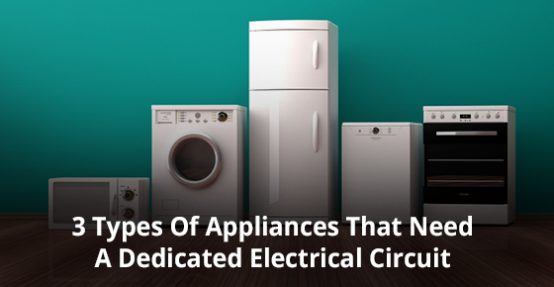
When an appliance is connected to a dedicated electrical circuit, it means that it doesn’t share the circuit and circuit breaker with any other electronic in your home. During electrical circuit installation, the dedicated circuit and breaker are isolated from the main electrical circuit powering your home.
Generally, properties are wired with separate circuits in order to distribute power consumption. Each circuit has a fuse or circuit breaker to prevent electrical damage in the event that too much electricity is drawn at once. When you have a circuit supporting only one appliance, it’s referred to as a dedicated circuit, and it comes with its own breaker in the electrical panel.
Dedicated circuits are usually recommended when you have electronics that consume a lot of power, and are known to cause voltage fluctuations or surges when being turned on/off, which may affect other electrical devices that share an electrical circuit.
Basically, you can choose to connect either the power-hungry appliance or the low-power rated appliance to its own dedicated circuit and breaker.
Dedicated Electrical Circuits to Prevent Overloads
When you have two or more electronic devices connected to one circuit, there is a risk that they will draw more power from the circuit than it’s designed to handle. When the circuit is overloaded, it could cause the fuse to burn or the circuit breaker to trip.
Unfortunately, this is a common occurrence in kitchens in older homes, whose circuits were designed at a time when there weren’t as many electrical appliances and equipment that are now very common in modern kitchens.
Modern kitchens rely heavily on appliances that use a lot of power to generate heat, like ovens, electrical grills, and toasters, or have built-in motors, like garbage disposers, washing machines, and mixers. These two categories of appliances consume the most energy in your home.
If your toaster, garbage disposer, and pizza oven are connected on the same circuit, and you try to use two or all of them at the same time, you would easily overload the circuit and trip the circuit breaker. This is particularly a big problem for older kitchens that have one or two, 15-amp circuits to power all the appliances, including the must-have, power hungry refrigerator and microwave oven.
Modern kitchens, on the other hand, are designed to accommodate as many electrical appliances as possible, usually with between 4 and 7 20-amp circuits. Having multiple circuits dramatically reduces the risk of overloading any particular circuit, especially when the major appliances are connected to their own dedicated circuits.
So, which electronics and appliances should have a dedicated electrical circuit and breaker?
Equipment with high-power demand
The appliances that typically need to be connected to their own circuit with an independent circuit breaker are those that draw a lot more power than other electronics in the home or office.
Such kinds of power-hungry equipment and appliances include:
The dedicated circuit will help ensure that the high-power appliance has enough amperage to operate properly and safely without causing the circuit breaker to trip.
Must-work appliances or devices
According to the National Electric Code, any device or appliance marked as critical-use must be served by its own dedicated electrical circuit to prevent another device from tripping the breaker and cutting power to that important appliance.
For instance, if the circuit breaker for your water heater, furnace, refrigerator, or sump pump gets tripped and you’re not aware of it, you could end up with no hot water, a freezing house, a fridge full of rotten food, or a flooded basement.
Basically, any electrical devices that need to work in order to protect your family, valuables, and property must be put on a dedicated circuit. These include:
Expensive Appliances
When multiple electronic devices are connected to the same circuit, it means that the available electrical supply will be distributed among them. This is usually not a problem for low-energy users like lamps and fans. However, expensive electronics might be more sensitive to power-voltage fluctuations that may occur on shared circuits. To protect your investments, you should consider putting expensive electronics on a dedicated circuit. These may include:
Final note
If your home has a dedicated circuit, it should be indicated on the electrical service panel or breaker box with a label. If your circuit breaker trips or the lights dim when you run your appliances, perhaps because any of the appliances mentioned above are doubled-up on one breaker or they’re combined with the lighting, receptacles, or other equipment, then you should talk to a licensed electrical contractor.
Overloading the circuit is not only a nuisance, but also a safety hazard. Power fluctuations can also damage your expensive appliances and equipment, creating unnecessary costs that could have been avoided. Having an outdated electrical system that is not up to Code could also make it harder to sell your property.
Contact your local licensed electrician for advice on dedicated circuits or for a new electrical circuit installation. Keep in mind that the circuit size varies from appliance to appliance, so you need a professional electrical contractor to design your electrical circuits to match your unique needs.
© 2023 Licensed Electrical Installation & Service – Hi-Liteelectricinc.ca
All Rights Reserved.
Leave A Comment